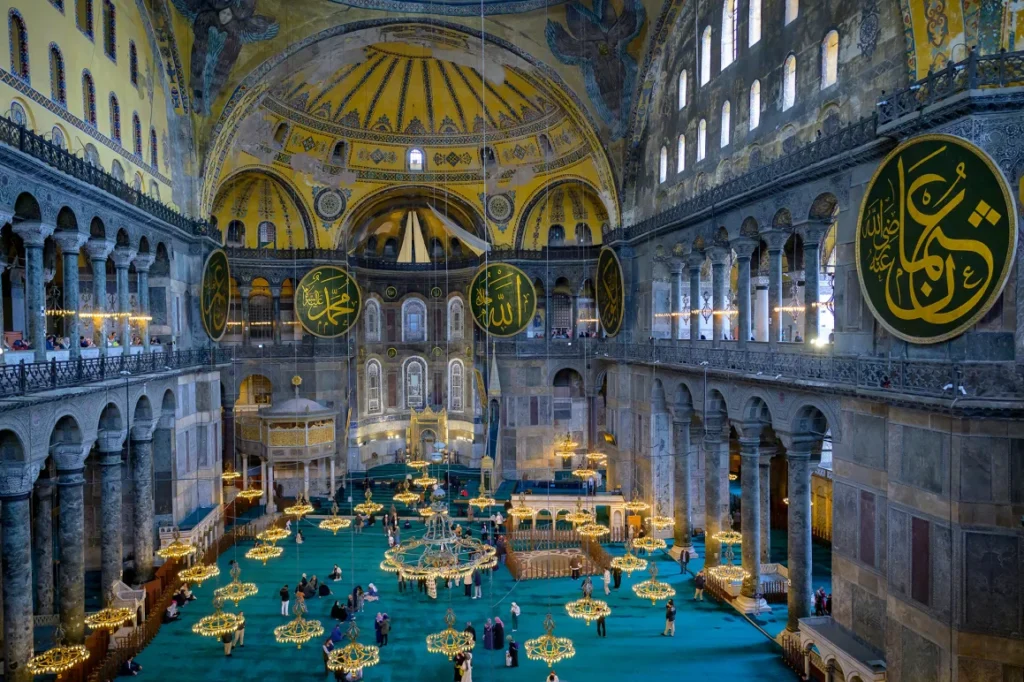Hagia Sophia in Istanbul continues to stand as one of the greatest testaments to human creativity faith and resilience. Built in 537 AD under the reign of Emperor Justinian it was designed with a revolutionary dome that changed the course of architecture forever. Over nearly fifteen centuries this masterpiece has been transformed from a Byzantine cathedral to an Ottoman mosque to a museum and today once again functions as a mosque.
What makes Hagia Sophia remarkable is not only its size and beauty but also the mysteries it holds within. At the center of the building lies the Omphalos a marble floor ornament of concentric circles that has fascinated visitors and scholars for generations. Tucked away above the southwest vestibule are mosaics hidden from the public for centuries carefully documented in the twentieth century yet still rarely seen. These mosaics depict holy figures and tell stories from early Christianity adding to the layered identity of the monument.
The structure has also survived devastating earthquakes including the collapse of its dome in 558 AD. Each time it was rebuilt and reinforced with stronger buttresses and architectural adjustments that helped preserve its grandeur. Today Hagia Sophia is undergoing its most ambitious restoration in 1500 years with teams working to strengthen its domes replace ancient lead coverings and stabilize its foundations. The work is designed to protect the building from seismic threats while ensuring that both worshippers and tourists can continue to experience its grandeur.
Hagia Sophia remains more than just a historic site it is a living symbol of continuity. Its enduring beauty tells a story of empires faiths and cultures intersecting across centuries. From the hidden mosaics to the marble floor patterns from its history of destruction and renewal to its present restoration Hagia Sophia stands as one of the most powerful cultural landmarks in the world.


